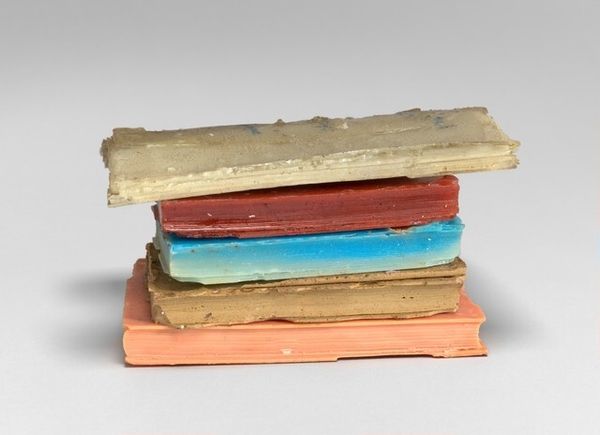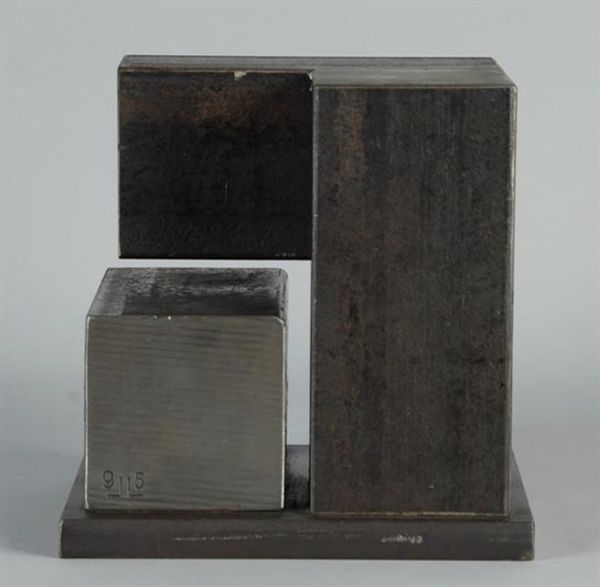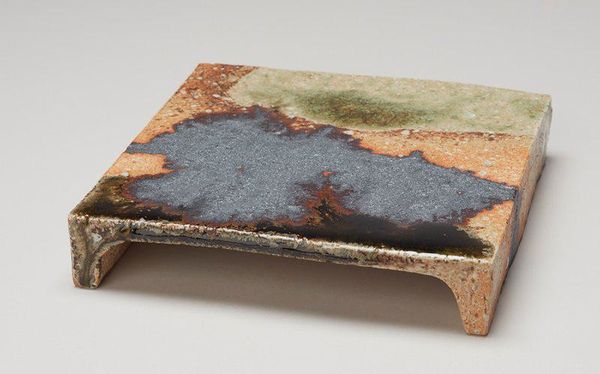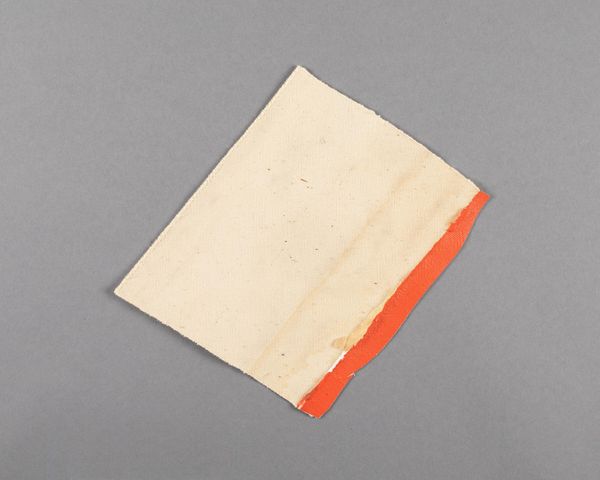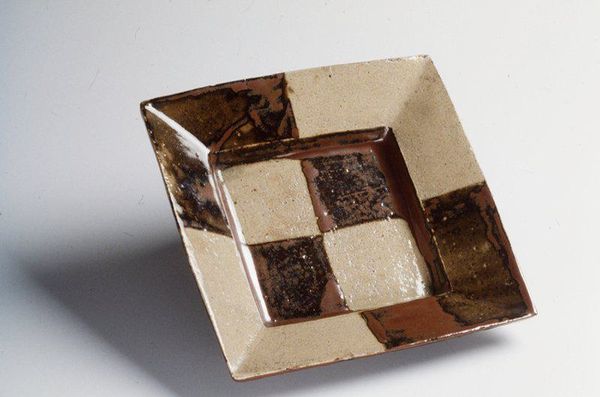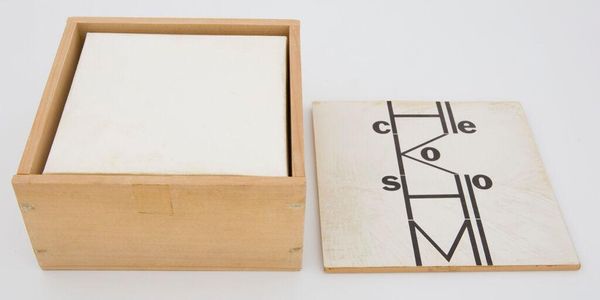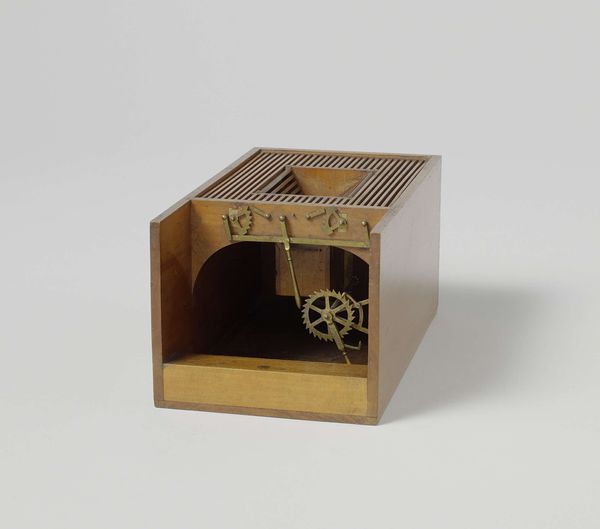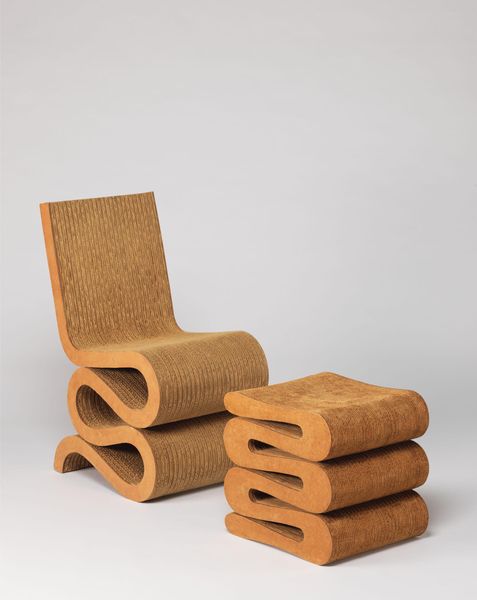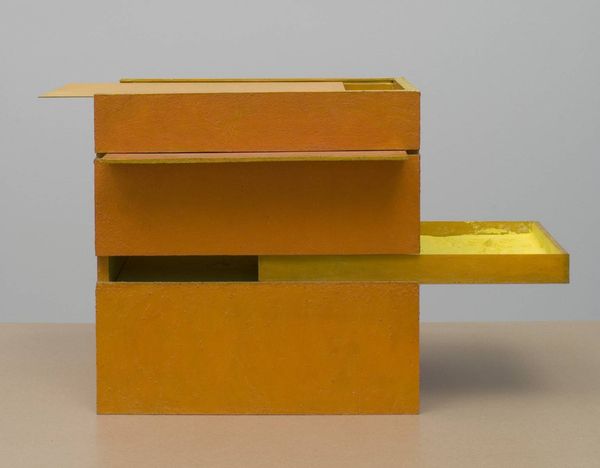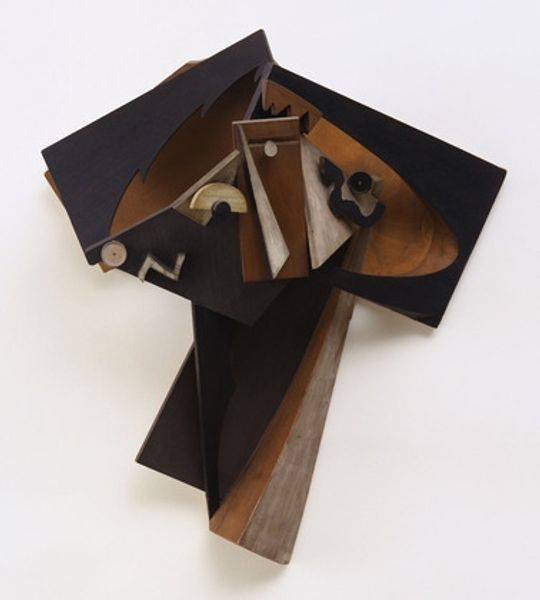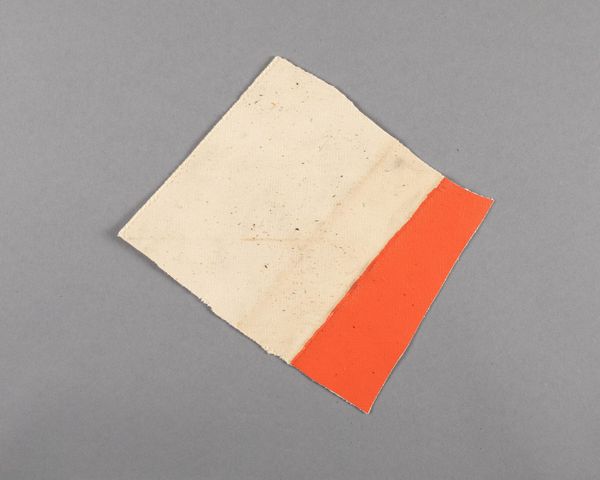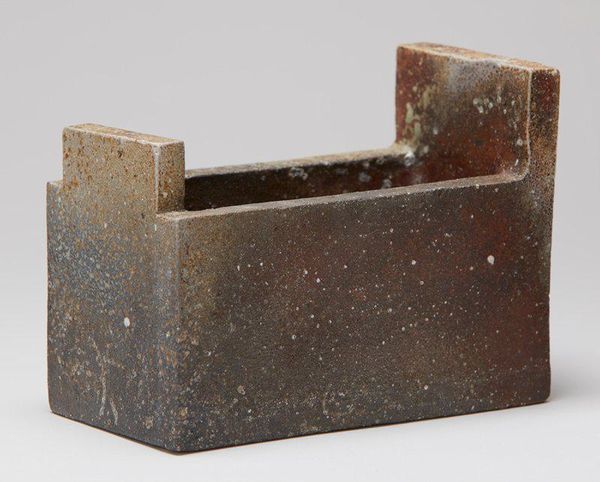
sculpture, wood
#
abstract-expressionism
#
form
#
geometric
#
sculpture
#
wood
Dimensions: length 14 cm, width 6.7 cm, height 7.8 cm
Copyright: Rijks Museum: Open Domain
Curator: This object, titled "Brievenstandaard van Drees," translates to "Letter Rack of Drees." It dates from 1942-1945, and it’s made of wood. You can find it here at the Rijksmuseum. What are your first thoughts? Editor: Immediately, I’m struck by its simplicity, almost brutalist in its geometry. The stark contrast between the dark, presumably stained, wood and the warm tones is quite effective. There's a sense of groundedness, a quiet authority in such a small object. Curator: I find it fascinating to consider this work in the context of the Second World War period when it was created. The very act of creating an object of function and form amidst such upheaval seems to me an assertion of humanity, perhaps even a quiet act of resistance. Editor: That's a potent reading. Was the form chosen deliberately, do we think, for the feeling it elicits, or perhaps to echo certain ideologies? The square and rectangle feel solid, foundational. But the triangle balanced on top feels more precarious, or is it more of a statement of resistance like you said, but from the creator's own beliefs? Curator: Precisely. The abstraction could be interpreted as a subtle commentary. During the occupation, the Dutch government was under immense pressure. For Drees, a prominent politician who would later become Prime Minister, to own, or perhaps even commission, such a piece implies a certain…intellectual alignment. The simplicity avoids overtly nationalistic imagery while perhaps hinting at foundational ideals. Editor: It's interesting to consider how the constraints of the time - limited materials, potential censorship - may have shaped the aesthetic. Something simple, functional, and laden with multiple meanings. Were artists at the time expected to stay creating nationalistic items only? Or were items like these considered not a threat and left alone? Curator: Certainly, overtly propagandistic art was favored by the occupying forces, but functional objects often escaped such scrutiny, as you mention. And it's in that space that artists, even anonymous ones like the creator of this letter rack, found room to express more nuanced, or even subversive ideas. The very lack of explicit messaging can become its own form of protest. Editor: So much meaning packed into such a small, humble object! It really invites us to question how art and everyday life intersect with power structures. Curator: Indeed. I believe exploring these connections allows us a much richer understanding of both art and history. Editor: I'll definitely be looking at other everyday art objects with new eyes now!
Comments
No comments
Be the first to comment and join the conversation on the ultimate creative platform.
